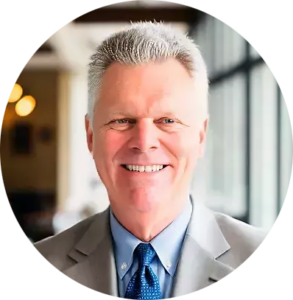1-Minute Video: Reverse Mortgage Tustin CA
Fact and Fiction About Reverse Mortgages
There’s a lot of misinformation out there about #reversemortgages, so let’s separate the facts from the fiction. To qualify for a #reversemortgage, you must own your home outright or have at least 50% equity, but you don’t have to surrender the title… you retain ownership. A reverse mortgage is a way for senior homeowners to generate additional cash flow in retirement by tapping into the equity in their home… and it is not necessarily a lifeline for those in financial straits. Interest rates for a reverse mortgage are not high. Depending on the type of reverse mortgage you choose, interest rates are often comparable to those of a traditional mortgage. With a reverse mortgage, monthly mortgage and interest payments become optional, and the resulting savings gives you additional cash flow to fund a more comfortable lifestyle in retirement. Your heirs will have the option to either sell the home or refinance it and utilize the proceeds to repay the loan when the time for a payoff occurs. In fact, depending on how the value of your home appreciates over time, a reverse mortgage could provide a source of equity to those same heirs if they simply choose to sell it. To find out the truth about reverse mortgages, call us today.
Fact or Fiction – With a Reverse Mortgage, you are selling your house to the bank.
Fiction: The misconception that a reverse mortgage involves selling your house to the bank is not accurate. In reality, a reverse mortgage is a loan product that allows homeowners aged 62 or older (55+ in California) to borrow against the equity in their home. The homeowner retains ownership of the home and continues to live in it while receiving funds from the lender, either as a lump sum, monthly payments, or a line of credit. The loan is repaid when the homeowner no longer occupies the home as their primary residence, typically when they sell the house, move out, or pass away. At that point, the proceeds from the sale of the home are used to repay the loan, with any remaining equity going to the homeowner or their heirs. Therefore, the homeowner retains ownership and control of their home throughout the reverse mortgage.
Fact or Fiction – Reverse Mortgages are costly and have high fees.
Fiction: While reverse mortgages do involve fees and costs, they may not always be prohibitively high. It’s essential for borrowers to carefully consider and understand the fees associated with a reverse mortgage before proceeding. These fees typically include counseling, origination fees, closing costs, mortgage insurance premiums, and appraisal fee. However, the Home Equity Conversion Mortgage (HECM) program, has caps on origination fees and mortgage insurance premiums to protect borrowers. Overall, while reverse mortgages can have fees and costs, they may still provide value for homeowners as a way to access home equity in retirement.
Fact or Fiction – When the loan balance grows bigger than the home value, the borrower is on the hook for the difference.
Fiction: It is a common misconception that borrowers are responsible for the difference if the loan balance becomes larger than the value of the home. However, with most reverse mortgages, including FHA-insured Home Equity Conversion Mortgages (HECMs), borrowers are protected by a feature called non-recourse. This means that if the loan balance surpasses the home’s value when it’s sold to repay the loan, the borrower (or their estate) is not required to pay the difference. Instead, the lender absorbs the loss, and any remaining equity in the home is not used to cover the deficit. This provision provides significant consumer protection and ensures that borrowers or their heirs are not burdened with additional debt beyond the value of the home.
Fact or Fiction – You must own your home free and clear to qualify for a reverse mortgage.
Fiction: You do not necessarily need to own your home free and clear to qualify for a reverse mortgage. While it’s true that having significant equity in your home is advantageous, you can still qualify for a reverse mortgage even if you have an existing mortgage on your home. The proceeds from the reverse mortgage are used to pay off any existing mortgage balance, and the remaining funds can be accessed by the homeowner. The amount of equity you have in your home will affect how much you can borrow with a reverse mortgage. Additionally, you must continue to meet other eligibility criteria, such as being at least 62 years old (55+ in California), occupying the property as your primary residence, and continuing to pay your property taxes and homeowners insurance. Therefore, while owning your home outright can provide access to more funds, it’s not a strict requirement for obtaining a reverse mortgage.
Fact or Fiction – Reverse Mortgages are a loan of last resort.
Fiction: While reverse mortgages are often associated with being a loan of last resort, they can be a valuable financial tool when used strategically as part of a comprehensive retirement plan. While some homeowners may turn to reverse mortgages during financial hardship or retirement income challenges, others may choose to use them proactively to enhance their retirement lifestyle, cover unexpected expenses, or fund large purchases, such as home renovations or healthcare costs. By accessing their home equity through a reverse mortgage, homeowners can supplement their retirement income without selling their home or exhausting other savings and investments prematurely.
Jeff Markell NMLS# 224196
Grandpa Mortgage – U.S. Air Force Veteran
Reverse Mortgages – Mortgage Broker In OC
(714) 614-4040
jeff@empirehomeloans.com
Empire Home Loans, Inc. NMLS# 1839243
Serving all of California


